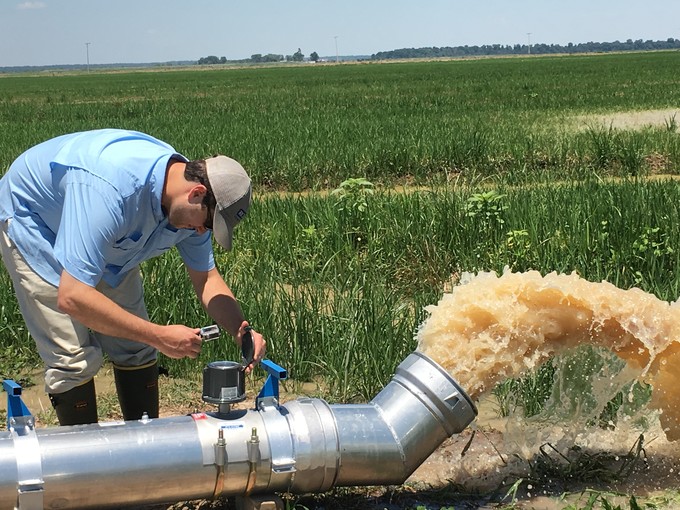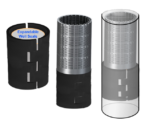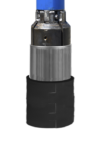

Sand Pumping

Sand in the water can sometimes be a difficult problem to solve, and we often make it more difficult than it needs to be. With proper knowledge, a sand problem can all most always be isolated and repaired without relining or reducing the pumping capacity of a well. With our extensive experience in the industry, we have come to learn that when a sand problem arises it is often equated as a pumping problem. Sand is a well problem and when we think the pump is responsible for sand entry we often end up with an unnecessary expensive fix.
Example
A company that sells filtration attachments claims field tests conducted in California in the late 1970’s showed high turbulent water velocity is much greater near the pump, and pump suction energy dissipates rapidly at distance. They concluded that distributing suction evenly through a long filter attachment would pull in water evenly and this would solve the sand problem.
What is wrong is their claim misleads a customer into believing that suction can be distributed downwards. Suction is vacuum pull and can only pull water down to enter a suction tube. There would be no change except it would slow down rising water, due to the fact it is rising in a smaller pipe. The next biggest mistake is using a boot or a long filtration pack to control inflow. Using a pump attachment may work for a little while, but it does not change inflow, and unless the insert or attachment slows down water it almost always becomes stuck from sand filling in behind.
Inflow velocity
The high turbulent velocity close to the pump is from all collected water exiting through one intake tube. It is always there in every well and has nothing to do with well water inflow. After well start up water enters a well from head pressure, and pressure collects inflow evenly through all well openings. When a well becomes scaled over or clogged inflow velocity speeds up because there is less openings. When a good well starts pumping sand it is not a pumping problem it is a well problem. The solution is to clean and repair the well or slow down pumping rate until the well stops producing sand.
Sand entry
To find sand entry we must understand how head pressure lifts water. Outside pressure counterbalances with inside pressure and this pushes water up. Because water is lifted, not pulled-up, the whole column inside the well rises without separating. This enables the deep water and sand to flow up just as easy as water near the pump. This mean sand can enter anywhere regardless of where a pump is set. A grain of sand is small and under water buoyancy makes it as light as a feather. It only takes a velocity of about .007 feet per second to carry sand. It is not uncommon to see sand rising out of the fill in the bottom of a well that is hundreds of feet below where a pump is set.
Locating Sand Entry
Start by measuring the time from pump start up until the sand is visible. The longer it takes the deeper down the sand is entering. Next run a downhole camera looking for wear damage. If sand is entering it is going to leave a mark, hole or broken casing. Often, sand enters from where we least expect it. Open perforations even next to the pump have a slower entrance velocity than a mostly plugged area. Therefore sand is most often found deep in heavy scaled over areas from a break, hole or one worn out perforation. When in doubt it is best not to guess and use a water well professional to do a dynamic flow test using a downhole camera or do a geophysical logging profile.
The Solution
Most of the time sand entry can be narrowed down to a small entry point or area. Given that, a repair patch or short section of screen can solve the problem. The advantage is, it is a less costly solution and you don’t lose the water volume that you do by downsizing the well with a long liner or long insert. No matter what way you go don’t forget to clean the well that is likely why a well ends up with a sand problem in the first place.

Well Work
It a dirty job but some one need to do it

1.800.961.9355 (WELL)



Expandable rubber seals
Using an expandable seal to stop surface contamination to Home Page Expanable Seals Repair a failed surface seal and grout it in in place. Back
Comments welcome email: waterwellbob@gmail.com


